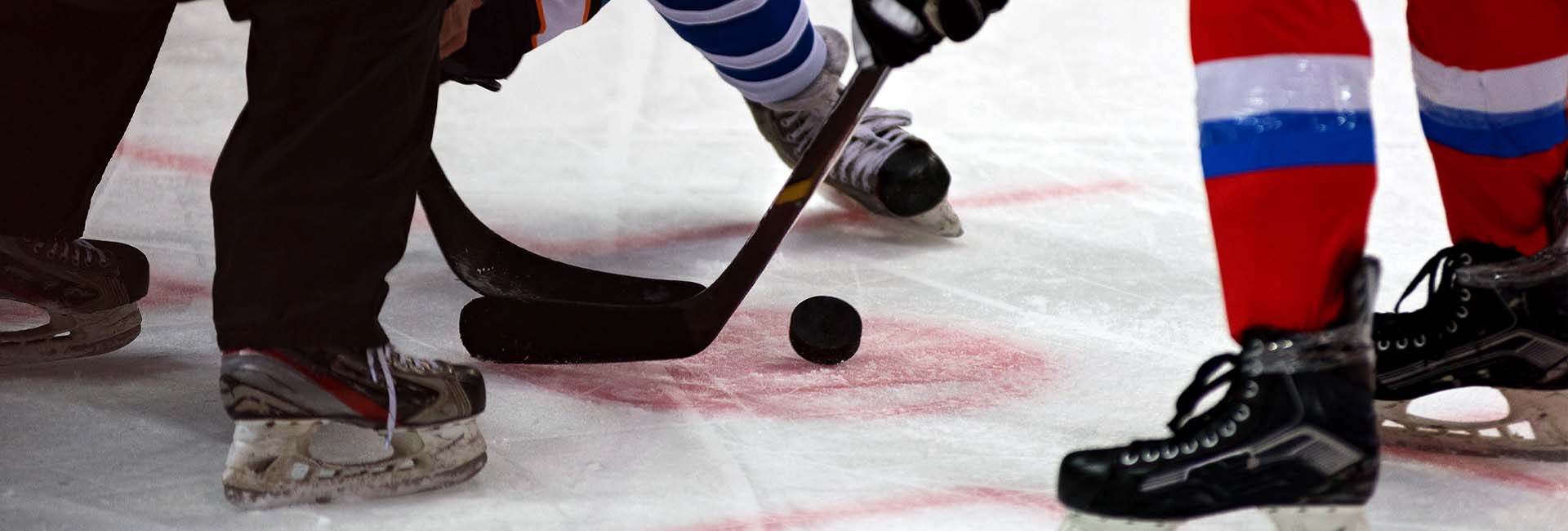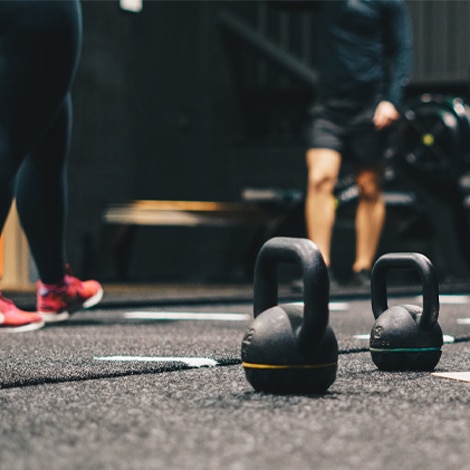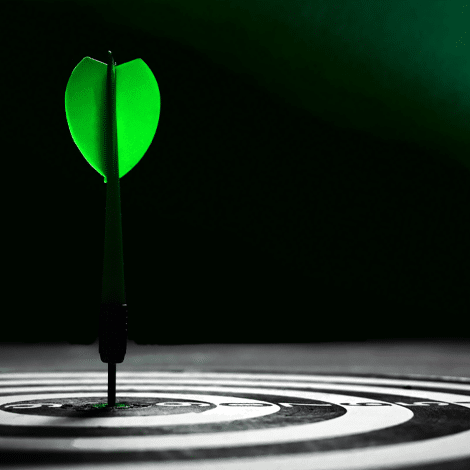by Marcus Colby
Ice hockey is a physically demanding sport that not only requires players to be fast, strong, and skillful but also to withstand the punishment of collisions and checks. Wearables and other kinds of tracking technology can help prepare players for such rigors, but merely collecting data is only the first piece of the performance puzzle – it also needs to be aggregated, visualized, and reported on to make it actionable. In this post, we explore the top five AMS integrations that allow professional hockey clubs to improve their players’ preparation and performance on the ice.
VELOCITY-BASED TRAINING
Technologies: GymAware
There are an increasing number of velocity-based training (VBT) systems on the market, but due to the company’s commitment to continual innovation, GymAware is one of the most widely used in professional hockey facilities. By attaching to a barbell, GymAware enables strength and conditioning (S+C) coaches to keep tabs on players’ speed and power output in real time using an iPad or another connected tablet. If an athlete drifts outside a preset range for a particular exercise, there’s an audible cue that signals a need to either increase the velocity of the next rep or end the set.
Once integrated with an human performance platform such as Smartabase, the S+C coach can compare how a player did in that day’s session against previous workouts, enabling them to identify trends that can lead to beneficial programming changes. They can also create customized analytics of strength training and testing data that’s combined with other data sets to form a broad and holistic overview of performance, strength development, and readiness to compete. Simple dashboards provide the coaching staff and players with a visual representation of VBT data they can easily understand.
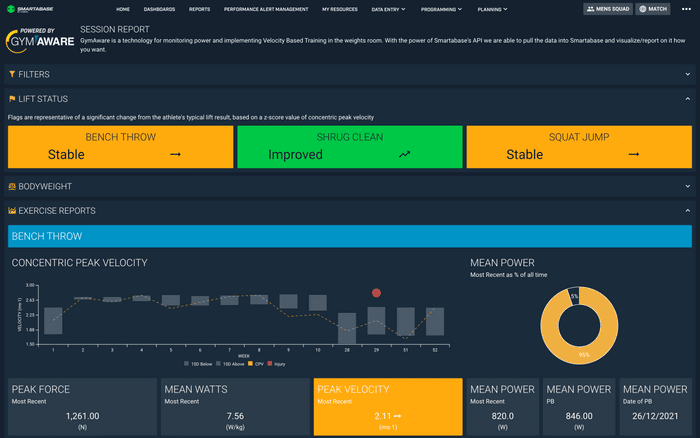
PERFORMANCE TESTING
Technologies: Hawkin Dynamics and VALD
Force generation is a key performance metric in professional hockey. Using Hawkin Dynamics’s HD Force Plates and VALD’s ForceDecks, S+C coaches can assess how much power a player is generating. Metrics such as peak force potential off a two-footed jump can provide useful baselines, and as hockey skating involves single-leg force capability, one-footed leaps can also be measured via force plates. This technology has progressed so that it’s now wireless and much more portable than previous iterations, making it easier for coaches to conduct performance testing while the team is traveling.
Importing such information into a human performance / athlete management system (AMS) allows the performance staff to find patterns in the data relating to how force production changes in response to certain kinds of training and waxes or wanes during various points in the season. If they can see that certain players’ force production has dipped significantly, this could indicate that their readiness has been compromised by under-recovering or excessive load exposure.
With the help of a dashboard and intuitive reports generated by the AMS, this can be more easily communicated to the whole coaching staff so that they can make the necessary adjustments to upcoming training sessions.
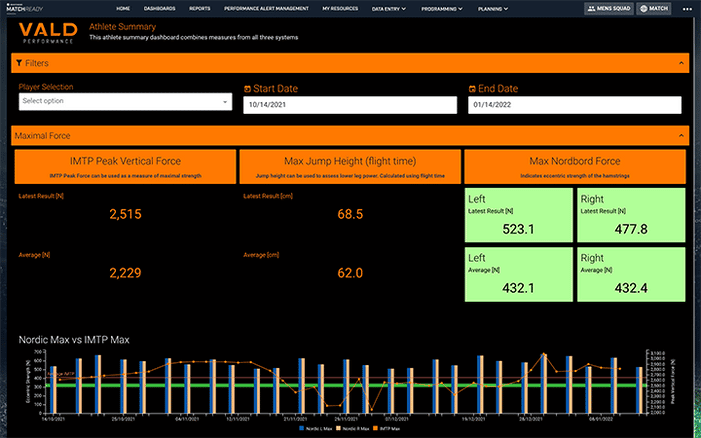
LOAD MONITORING
Technologies: SMT and Catapult
SMT’s Infrared Puck- and Player-Tracking system generates more than a million 3D coordinates/data points during each regulation NHL game. If you tune in to watch pro hockey on TV, you’ll see some of these are integrated into the broadcast, but the system is also invaluable from a performance perspective. Catapult units can capture their own distinct load monitoring information, and an integration imports data from the league-wide SMT system and normalizes it.
The combined data sets can then be fed directly into an human performance platform like Smartabase, where it is visualized and various reports can be run to enhance load management of each player and squad. As more player data is being captured than ever before, it’s essential that the performance staff can zero in on the precise information they need to adjust load exposure and present concise, meaningful findings to the head and assistant coaches. This is much easier to do in an AMS, and it allows hockey clubs to maximize their investment in game and practice tracking software.
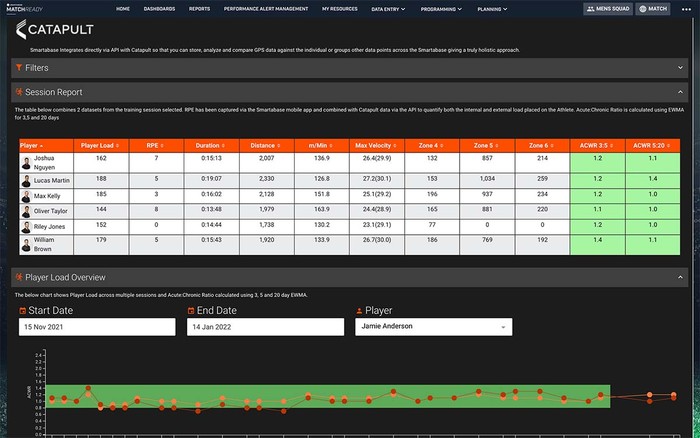
STRENGTH & CONDITIONING
Technologies: BridgeAthletic and TeamBuildr
Playing pro hockey requires players to maintain their balance on skates while moving at high speed on a slick surface and generating rotational speed to pass and shoot. Athletes must also be able to resist and absorb force from opponents as they maintain their momentum. Such capabilities are brought to bear on the ice, but they’re developed in the weight room. Much like in pro basketball, hockey S+C during the season largely consists of ensuring that players maintain their power, strength, and speed, which is where systems like BridgeAthletic and TeamBuildr come into play. Such applications can also be useful for designing and implementing hockey players’ offseason strength and conditioning programming to improve readiness when players report for pre-season camp.
Integrating S+C data into an AMS allows teams to get a more granular view of players’ progress and to also view their performance metrics over the course of a week, month, or entire season. This makes it easier to find the right balance between overtraining – which can compromise effectiveness during games and predispose individuals to injury and illness – and exposing players to insufficient loads to produce the desired adaptations. With complete data at their fingertips in the AMS, the performance staff are more likely to hit the right sweet spot and ensure that S+C is programmed effectively as part of an integrated approach to player preparation.
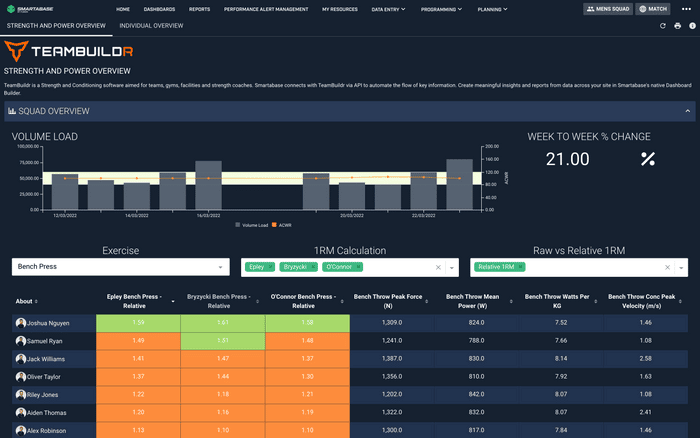
HYDRATION
Technologies: Rice Lake Scales
Hydration is another crucial component of high performance and overall wellness in pro hockey. The combination of high physical output and wearing several layers of clothing and padding means that players sweat a lot during practices and games. The research shows that even a small percentage decrease in hydration status can lead to decreases in power output and cognition, which is why weigh-ins before and after sessions can be useful.
Smart scales like those supplied by Rice Lake enable the performance staff to assess each player’s hydration status and also provide hydration recommendations for before, during, and after practices and games. Players can receive customized suggestions for the type and size of beverages they need to stay hydrated, and then check off which ones they consume and when so that coaches know they’re getting the right amount and kind of fluids.
When imported into an AMS like Smartabase, such information can be viewed alongside game and practice data to see which sessions are the most physiologically demanding. Hydration status can also be integrated with nutrition details for each player so that nutritionists, sports dieticians, and other professionals have access to a well-rounded picture of players’ fueling strategies. Performance staff also have the option of evaluating nutrition and hydration data with body composition numbers to help players meet personalized targets.
The high physiological demands of pro hockey make it vital for performance and coaching staff to have access to complete, updated, and comprehensive player data. By integrating the systems mentioned above with a human performance platform such as Smartabase, it’s easier to prepare, test, and manage players in a responsible and proactive way that enables them to tap into their full performance potential.

